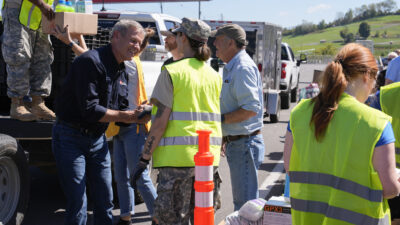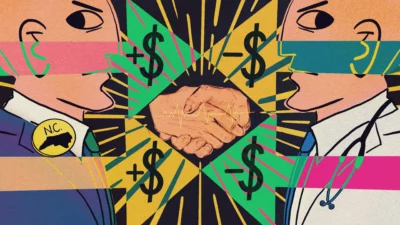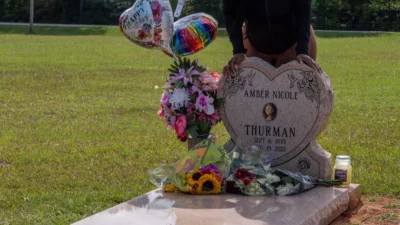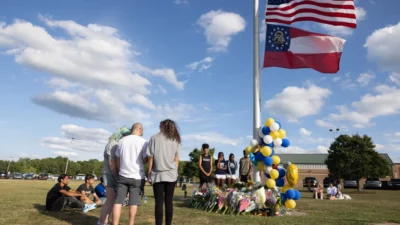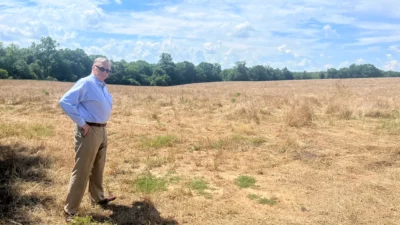Even before COVID-19 turned life upside down in early 2020, an intensive outpatient program for LGBTQIA+ youth was in the works at UPMC Western Psychiatric Hospital.
But when the pandemic forced people into social isolation, youths who already needed support and specific interventions could not be around like-minded peers. Dr. Abigail Schlesinger, clinical chief of Child and Adolescent Psychiatry and Integrated Care for UPMC, Western Psychiatric Hospital, and Children’s Hospital of Pittsburgh, and her colleagues went ahead and launched the program virtually instead.
Youths who struggle with their sexuality and/or gender identity – and now, felt isolated from each other – started meeting online three days a week, for three hours at a time.
“I really see the pandemic and just blowing the top off of what was already happening,” says Schlesinger, who is also a clinical associate professor of psychiatry and pediatrics at the University of Pittsburgh School of Medicine.
“We just saw more people coming for support and help.”
Online social interaction, for both youths and adults, helped everyone survive the isolation during pandemic lockdowns. Yet as precautions relax, kids need to move back to more in-person socializing and spending time with each other, in addition to keeping virtual friendships, experts say.
Undoubtedly, the trials of the past two and a half years have changed everyone, Schlesinger says. Parents should make the effort to help their kids, who have missed key in-person experiences and social development, get back on track emotionally.
“I think that this generation is going to propel the ways in which we connect online.” – Dr. Abigail Schlesinger
“I think there’s no question that … we always think about the proms and the big events, but it’s also the day-to-day experience of being a teenager or pre-teen,” she says. “I do believe we have a group of kids that we do need to continue to support and help, then figure out what the next steps are for them, socially and academically.”
Dr. Johanna Vidal-Phelan, speaking as a pediatrician and a mother, agrees.
“Definitely, the pandemic has taken a toll on children, but I want to be careful to say that it’s not all negative,” says Vidal-Phelan, a pediatrician at UPMC Children’s and clinical assistant professor of pediatrics at the University of Pittsburgh School of Medicine.
“I have to say that there’s good, and there’s challenges, and there’s opportunities.”
The upside of the pandemic, Vidal-Phelan says, includes parents spending more time with their kids at home — something younger children likely appreciate more than teenagers, although teens still need their parents — and people learning to appreciate loved ones and social connections more.
Another flip side of the sadness and disruption of the pandemic is that people learned coping skills, and children learned by their parents’ example, Vidal-Phelan says.
“What they learned from us during that time is, how do you cope with stress? How do you cope with challenges? How do you cope with sadness? How do you cope with anxiety?” she says.
“Kids are amazing,” Vidal-Phelan adds. “They really have shown us, the adults, the importance of resiliency.”
While learning coping skills benefits children, parents still need to help them transition back into an everyday life like what they had before COVID-19, Vidal-Phelan says.
One way that parents can help their kids get back on track is by scheduling with their pediatrician a well check-up, which many people stopped doing during the pandemic, according to the Centers for Disease Control and Prevention.
The doctor can diagnose problems with both physical and mental health, like depression that may have started during the pandemic, Vidal-Phelan says.
Schlesinger recommends that parents open up communication with their kids by asking them questions, and really listening to the answers. Simply ask them things like, “How are you doing? Are there things you need help with? Can I help? Are you stressed?”
If you have an older teen that seems behind academically and socially, perhaps starting at a community college instead of going off to a university after graduation would be helpful, Schlesinger says.
One piece of advice on making friends that applies to all life stages is getting involved in activities where people with common interests gather. For a kid in high school, that looks like joining clubs with after-school activities — like sports, drama, and dancing. They get to try and do things they enjoy and meet like-minded peers.
Also, parents shouldn’t dismiss online friendships, as these relationships can be as meaningful to modern teens as their IRL (“in real life”) connections, Schlesinger says.
Still, just like with in-person peers, parents should know who their kids are spending time with; perhaps parents can encourage kids to meet online friends in a coffee shop while the adults sit nearby.
“I think that this generation is going to propel the ways in which we connect online,” Schlesinger says.
As for kids’ losses from the pandemic, she says: “I don’t think they’re going to be scarred forever.”


